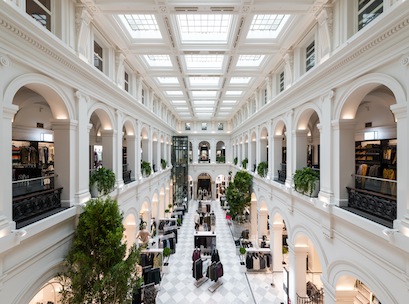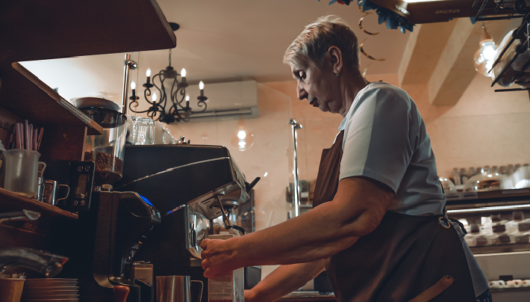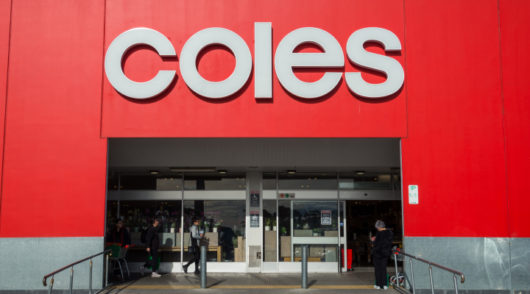 Several niche retail industries, from bridal stores to fast fashion and maternity wear, will outperform the wider retail industry over the next five years, according to business information analyst, IbisWorld.
Several niche retail industries, from bridal stores to fast fashion and maternity wear, will outperform the wider retail industry over the next five years, according to business information analyst, IbisWorld.
Fast fashion and luxury retailing are expected to lead the charge with annualised revenue growth of 11.0 per cent and 8.5 per cent respectively over the five years through 2019-20.
Daniel Ruthven, GM, IbisWorld Australia says retailers are undergoing one of the biggest transformations in the industry’s history, and as consumers’ disposable incomes increase, their tastes and buying behaviour change too.
“In many areas of retailing, the industry is fragmenting. Fast fashion business models, which have been harnessed particularly well by overseas retailers, are benefiting from our desire for up to the minute and affordable fashion,” said Ruthven.
“Luxury retailing has been buoyed by Australia’s relatively stable economy, high disposable incomes and increasingly discerning consumers. Furthermore, wealthy international visitors are providing additional incentives for luxury stores to increase their floor space,” said Ruthven.
In the lap of luxury
Premium brands have been relatively unaffected by the difficult conditions faced by mass market retailers. The luxury retailing industry is forecast to grow by 9.8 per cent annualised in the five years through 2014-15, to reach $1.6 billion.
IbisWorld anticipates this growth to continue at a searing pace of 8.5 per cent over the next five years, to reach revenue of almost $2.4 billion by the end of the decade. Australians have developed a taste for luxury leather goods and accessories in particular, splurging on items such as statement handbags.
A number of international luxury brands, including Chanel and Louis Vuitton, have opened new stores in Australia in the past year. Large multinational luxury brands have adapted their business models to the digital marketplace by offering exceptional customer service in elegant flagship stores selling high-value items, while more accessible categories, such as cosmetics and fragrances, are available through a number of retail channels.
While multinational luxury designers have achieved prominence, the failure of some of their domestic counterparts illustrates the challenges of keeping pace with fashion conscious consumers. Many local brands have lacked exposure to the growing demand for luxury accessories, focusing instead on the comparatively slow growing, but competitive, market for high end clothing.
A fast fashion fix
Healthy demand for on-trend and affordable clothing has resulted in the fast fashion category burgeoning by a staggering 10.1 per cenr annualised in the five years through 2014-15.
“Australia has embraced affordable, fashion forward apparel, which has driven robust growth over the past five years,” said Ruthven.
“This trend is expected to continue over the next five years, with revenue forecast to reach almost $2.2 billion in 2019-20.”
There have been growing competitive pressures from the influx of international retailers into the Australian market over the past five years. Global fashion giants, such as Uniqlo, H&M, Topshop, and Zara, have set their sights on the cash-laden wallets of Australian consumers as part of their aggressive global strategies.
The Australian market is regarded as ripe for the picking, with a proven domestic spend with online fast fashion retailers like Asos over the past five years.
A nice day for a white wedding
Bridal retailing has experienced a renaissance in recent years, as the number of weddings is growing in absolute terms.
IbisWorld expects that this trend will cause bridal stores’ revenue to grow by an annualised 1.5 per cent over the next five years, from $544.1 million in 2014-15 to $584.7 million in 2019-20.
“As the average age of marriage continues to increase, more couples are in a better financial position to splurge on big-ticket items like wedding dresses when they do decide to tie the knot,” said Ruthven.
Plus size fashion taking shape
The plus size clothing industry has recorded healthy revenue growth of 3.7 per cent over the past five years to reach $780.7 million in 2014-15. IbisWorld expects this growth to continue over the next five years, albeit it at a calmer pace of 1.9 per cent annualised.
“The proportion of Australians who are overweight or obese has consistently grown over the past five years to represent approximately 63.5 per cenr of the total population. To meet this demand for plus size clothing, a number of companies have branched out by offering consumers greater choice when it comes to fashionable clothing,” said Ruthven.
“Over the past five years growth in plus sized turnover has followed an increase in options for fashion-conscious buyers, however, international competition has also increased, with the launch of dedicated plus-sized ranges byonline fast fashion retailers attracting this demographic, which contributes to the slower growth outlook.”
Flexing its muscles
Fitness and athletic clothing has reported healthy revenue growth over the past five years, at an annualised 5.2 per cent to reach $1.8 billion in 2014-15. IbisWorld expects growth to continue at a similar pace over the next five years, toreach almost $2.2 billion in 2019-20.
“Australian companies have latched onto this trend, with labels such as 2XU and Lorna Jane expanding aggressively into the category through the launch of fashion- or performance-focused offerings that allow them to compete with global sportswear giants.”
Banking on the bump
Demand for maternity wear is expected to grow by a sizeable 5.4 per cent annualised in the five years from 2009-10 to 2014-15, to total $183.4 million.
“Expectant mothers are increasingly purchasing an entirely new wardrobe of maternity wear to remain fashionable during pregnancy, which is increasing the overall spend in this category despite a stable birth rate,” said Ruthven.
“Many of the industry’s players are either online-only stores or traditional operators with an online presence. Online shopping is particularly popular in this segment, with women taking advantage of the convenience and time savings.





